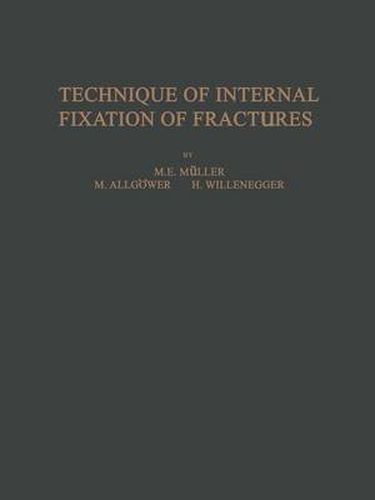Readings Newsletter
Become a Readings Member to make your shopping experience even easier.
Sign in or sign up for free!
You’re not far away from qualifying for FREE standard shipping within Australia
You’ve qualified for FREE standard shipping within Australia
The cart is loading…






This title is printed to order. This book may have been self-published. If so, we cannot guarantee the quality of the content. In the main most books will have gone through the editing process however some may not. We therefore suggest that you be aware of this before ordering this book. If in doubt check either the author or publisher’s details as we are unable to accept any returns unless they are faulty. Please contact us if you have any questions.
It is to the great and lasting credit of LORENZ BOHLER and his school that they have in the last decade developed and demonstrated so thoroughly the techniques for the conservative management of fractures. Nevertheless there have always been many, including some from BOHLER’S school, who have found considerable place for surgical management, and with the significant progress in general surgery seen in postwar years, a new stimulus has been given to this part of traumatic surgery, especially since bone injuries have become more complex and frequent. The concept of internal fixation is not new. The serious criticisms that have been levelled at it retain today their basic significance. Progress in the fields of asepsis, corrosion-free metal implants, operative experience and postoperative care has diminished the dangers but has not relieved the surgeon of responsibility. The Association for the Study of the Problems of Internal Fixation (AO) has devoted itself over a number of years to the basic principles and best methods of open treatment of fractures by means of extended clinical and scientific studies in order to determine in each individual case the most promising line of treatment. At the same time a well designed and tested instrument set has been developed with precise instructions for the appropriate techniques. As a result, the new observations about primary bone healing which have emerged from the practice of rigid internal fixation are as interesting as the uses to which they can be put in allowing early mobilization.
$9.00 standard shipping within Australia
FREE standard shipping within Australia for orders over $100.00
Express & International shipping calculated at checkout
This title is printed to order. This book may have been self-published. If so, we cannot guarantee the quality of the content. In the main most books will have gone through the editing process however some may not. We therefore suggest that you be aware of this before ordering this book. If in doubt check either the author or publisher’s details as we are unable to accept any returns unless they are faulty. Please contact us if you have any questions.
It is to the great and lasting credit of LORENZ BOHLER and his school that they have in the last decade developed and demonstrated so thoroughly the techniques for the conservative management of fractures. Nevertheless there have always been many, including some from BOHLER’S school, who have found considerable place for surgical management, and with the significant progress in general surgery seen in postwar years, a new stimulus has been given to this part of traumatic surgery, especially since bone injuries have become more complex and frequent. The concept of internal fixation is not new. The serious criticisms that have been levelled at it retain today their basic significance. Progress in the fields of asepsis, corrosion-free metal implants, operative experience and postoperative care has diminished the dangers but has not relieved the surgeon of responsibility. The Association for the Study of the Problems of Internal Fixation (AO) has devoted itself over a number of years to the basic principles and best methods of open treatment of fractures by means of extended clinical and scientific studies in order to determine in each individual case the most promising line of treatment. At the same time a well designed and tested instrument set has been developed with precise instructions for the appropriate techniques. As a result, the new observations about primary bone healing which have emerged from the practice of rigid internal fixation are as interesting as the uses to which they can be put in allowing early mobilization.